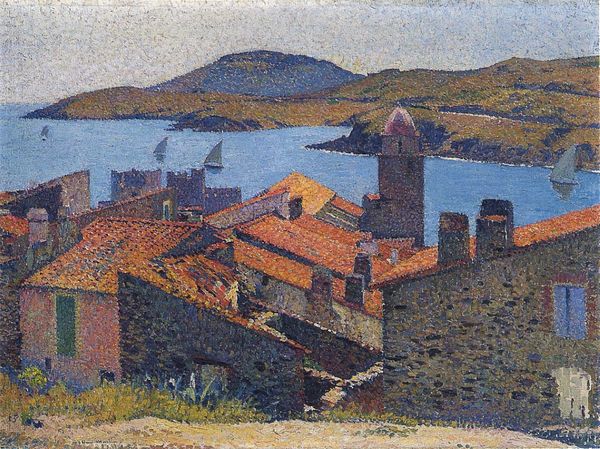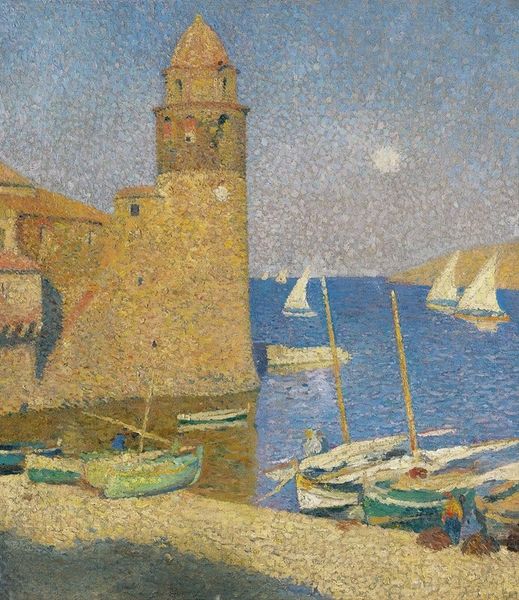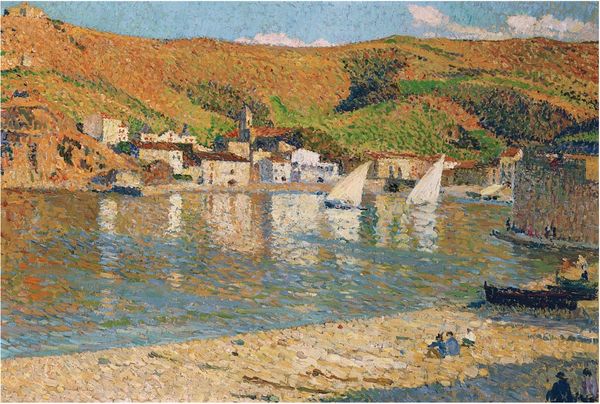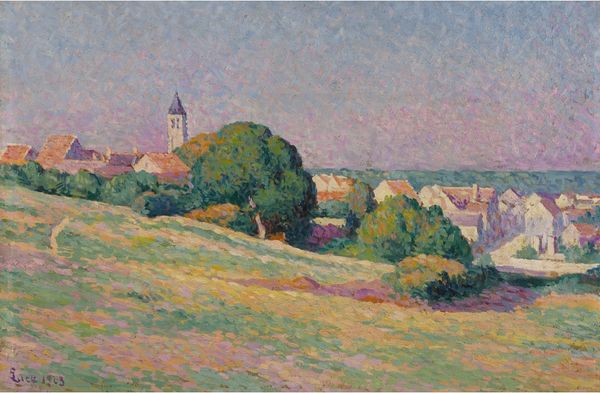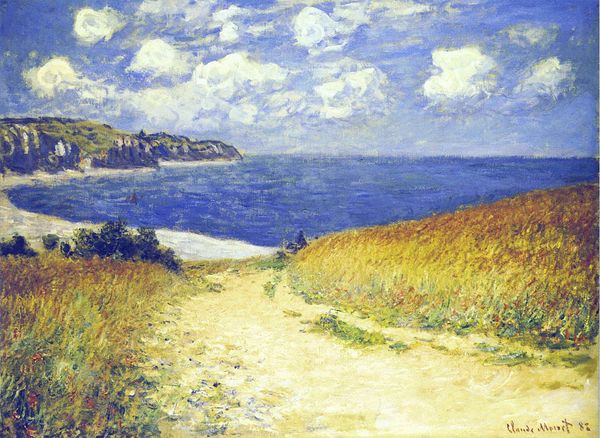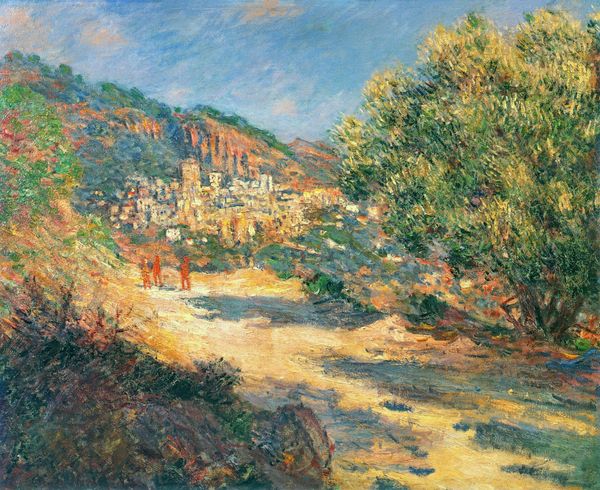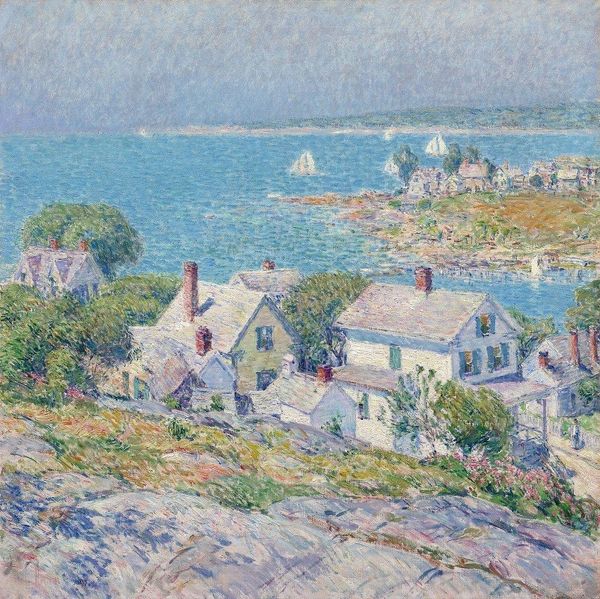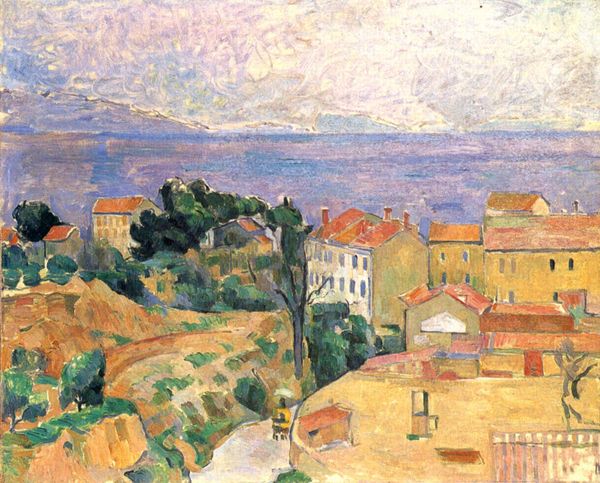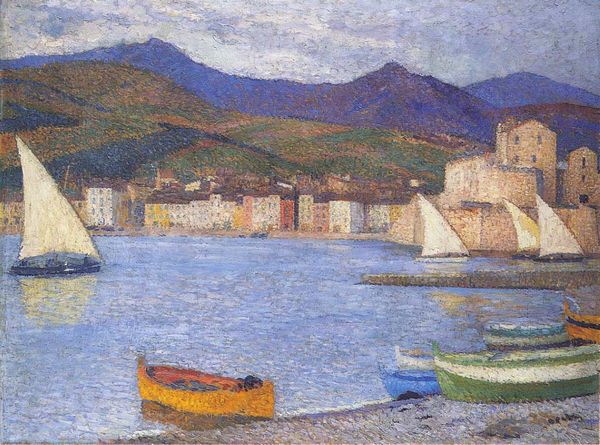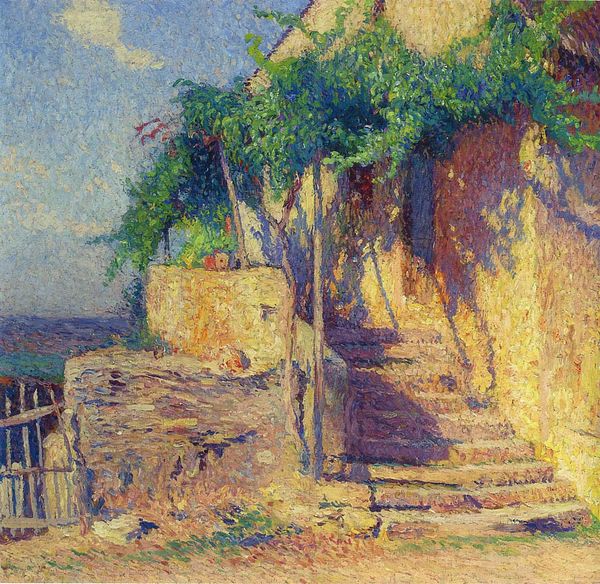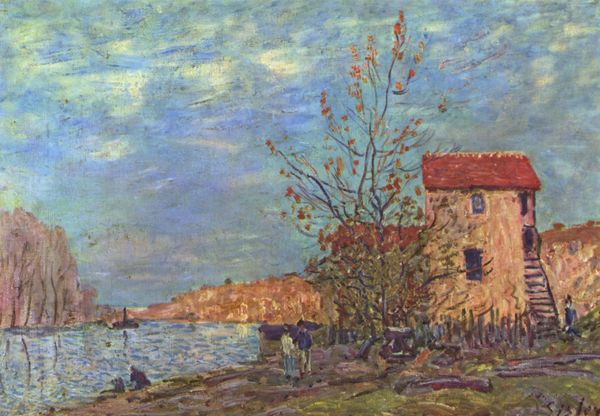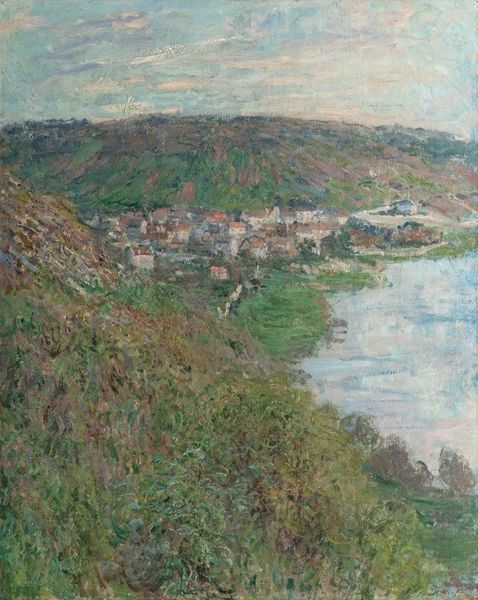
painting, oil-paint
#
tropical
#
painting
#
oil-paint
#
neo-impressionism
#
landscape
#
oil painting
#
geometric
#
seascape
#
cityscape
Copyright: Public Domain: Artvee
Curator: Maximilien Luce created this vibrant painting, titled "Saint-Tropez", in 1892. He worked primarily in oil paint and was associated with the Neo-Impressionist movement. Editor: The whole scene shimmers! It evokes a feeling of a sun-drenched, drowsy afternoon. It feels almost dreamlike. Curator: Neo-Impressionism, emerging in the late 19th century, aimed to be more scientific than Impressionism. Artists like Luce methodically applied small dots of pure color. The idea was that these would then blend optically in the viewer's eye. Pointillism. It offered a way for artists to explore the changing urban and industrial landscapes of the time with new techniques. Editor: The spire is so prominent! It calls back to traditional Christian symbols dominating a landscape, even in this “modern” style. I almost want to describe the spire, contrasted to the buildings at its feet, as phallic. It feels less holy and more assertive given its location, doesn’t it? Curator: That's quite a provocative interpretation! Saint-Tropez, in the late 19th century, was transitioning from a fishing village to a place where many artists, and indeed the elite, gathered in Southern France. The religious structure, even rendered in pointillist fashion, remains to give a specific geographic sense, helping people recognize its location. Editor: Absolutely, and notice the path leading directly to it? Almost a pilgrim’s route… Though, the man walking the road in the distance seems oblivious to the potential spirituality of his surroundings. He even looks, because of the placement in the image, as if the city itself is perched upon his back as a burden. Curator: You have a knack for dramatic readings! It reminds us of how artists used established symbols and new visual methods, grappling with evolving notions of faith, labor, and place in the public imagination of the modern era. Editor: In our own time, that visual complexity can deepen our experiences, which feels pretty cool. Curator: A cool thought, with a complicated and compelling visual history.
Comments
No comments
Be the first to comment and join the conversation on the ultimate creative platform.

